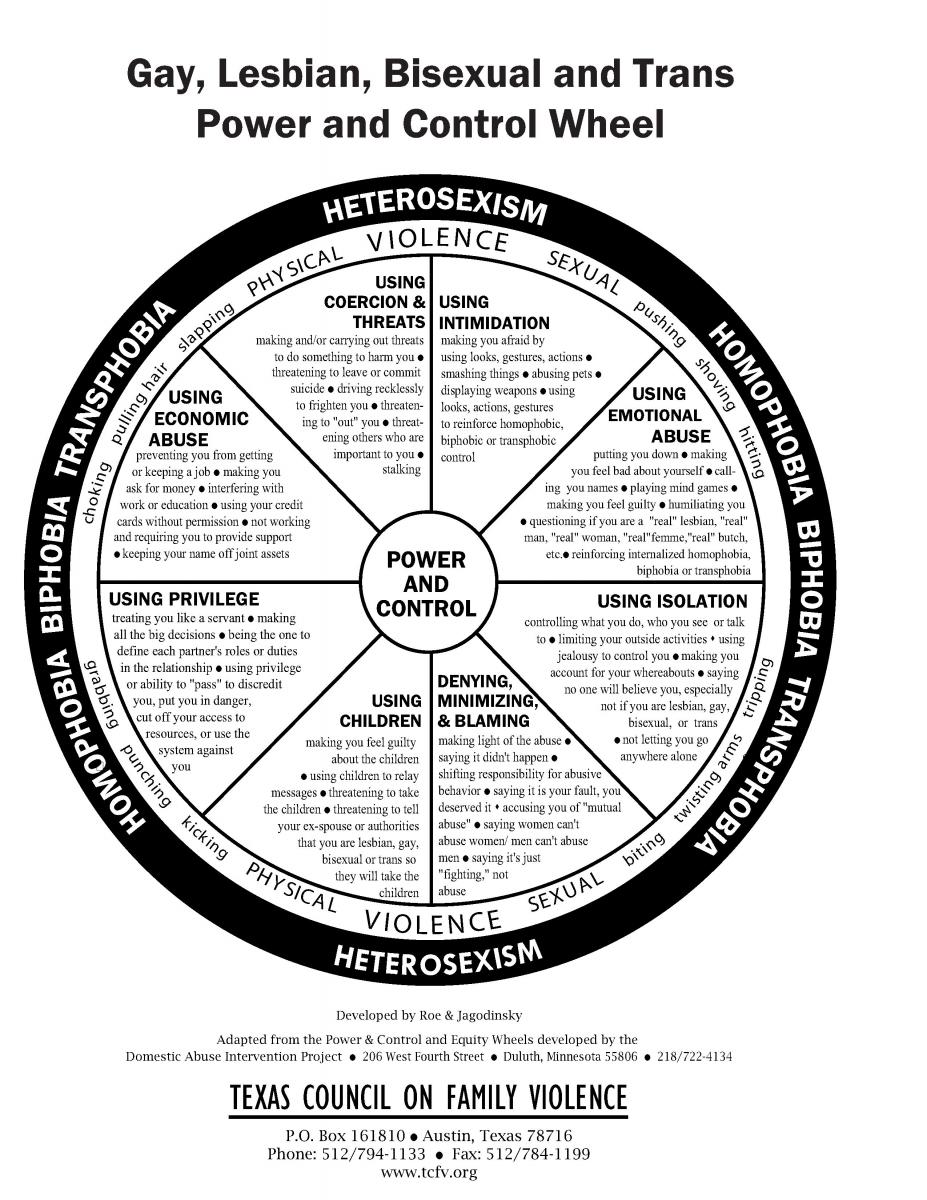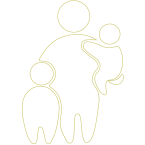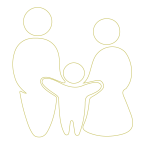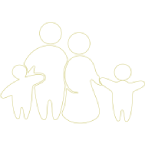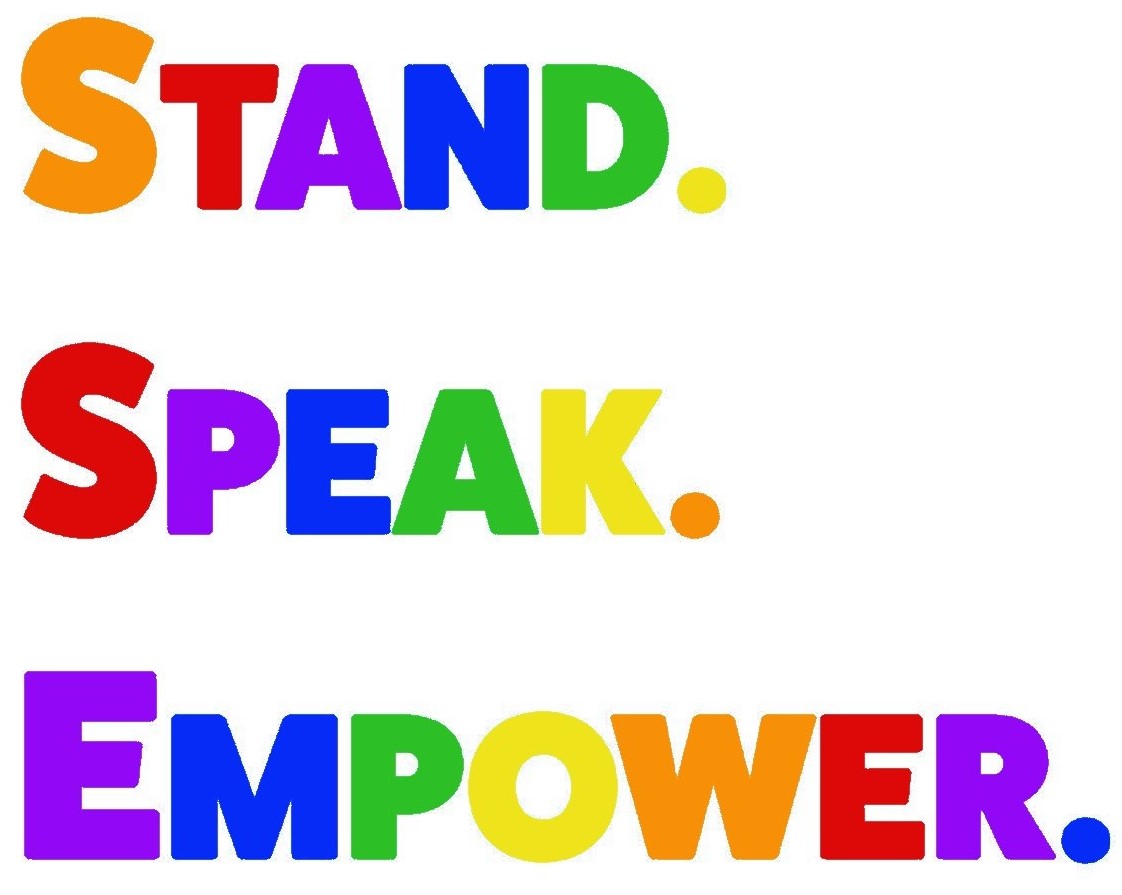
What is LGBTQ+? LGBTQ+ stands for lesbian, gay, bisexual, transgender, queer, questioning, intersex, asexual, and more. You may have heard other acronyms for the same communities, such as LGBT or LGBTQQIA. All of these acronyms refer to people who might be considered sexual and gender minorities, or those who experience marginalization around their sexual and gender identities.
Each of the terms in LGBTQ+ is defined below. This list is not meant to be exhaustive. It’s also important to know that some people who fit the definition of words such as “lesbian” or “bisexual” might not use those terms personally, and that we respect the right of everyone to define themselves and their identities.
L = Lesbian: women who are romantically and sexually attracted to other women. Some women use different language such as “same-gender loving” or “women who have sex with women” (WSW).
G = Gay: individuals who are attracted to members of the same sex or gender. Sometimes, “gay” is used specifically to refer to men who are romantically and sexually attracted to other men. Some men use different language such as “same-gender loving” or “men who have sex with men” (MSM).
B = Bisexual: individuals who are attracted to both men and women, or to people of all genders. Some individuals who are attracted to people of all genders use different language such as “pansexual” or “queer.”
T = Transgender: individuals whose gender identities do not match the sex/gender they were assigned at birth. This includes transgender women, who were assigned male at birth and identify as women; transgender men, who were assigned female at birth and identify as men; and individuals who identify as nonbinary (meaning they do not identify as men or women). Transgender individuals may use different language such as “agender,” “genderfluid,” “genderqueer,” or “gender creative.”
Q = Queer & Questioning: “queer” is sometimes used as an umbrella term for everyone who does not identify as straight or heterosexual. For some individuals, “queer” is a sexual identity in itself. “Questioning” is an umbrella term for people who are questioning or otherwise thinking about their sexual and gender identities.
+ = Other Sexual and Gender Minorities: many other individuals and communities fall outside of sexual and gender norms. This includes those who do not like to label their sexuality at all. It includes people whose sexualities meet the definitions listed above, but who do not personally identify as LGBTQ. The “+” in LGBTQ+ also includes a range of other sexualities and genders. Some examples include:
- Asexual individuals, who experience little or no sexual desire but may experience romantic desire and attraction
- People in consensually nonmonogamous partnerships, such as polyamorous communities, swingers, and people in open relationships
- People in BDSM, leather, or kink communities
- Sexually fluid individuals, whose sexual desires and behaviors may change over time
- Intersex individuals, including those diagnosed with Disorder of Sexual Development (DSD), whose bodies do not match medical criteria for the categories of “male” and “female.” DSD diagnoses can be based on a range of criteria including external genitalia, internal reproductive organs, hormone levels, chromosomes, and secondary sex characteristics. Although intersex and transgender communities face some overlapping barriers to care, and some intersex people identify as transgender, these communities are not identical. “Intersex” is a medical category, and “transgender” is a gender identity category.
Who else is there? People outside of LGBTQ+ communities also have sexual and gender identities! The most common terms for those individuals are:
Straight or Heterosexual: includes women who are romantically and sexually attracted to men, and men who are romantically and sexually to women.
Cisgender or Nontransgender: individuals whose gender identities match the sex/gender they were assigned at birth. This includes cisgender men, who were assigned male at birth and identify as men; and cisgender women, who were assigned female at birth and identify as women.
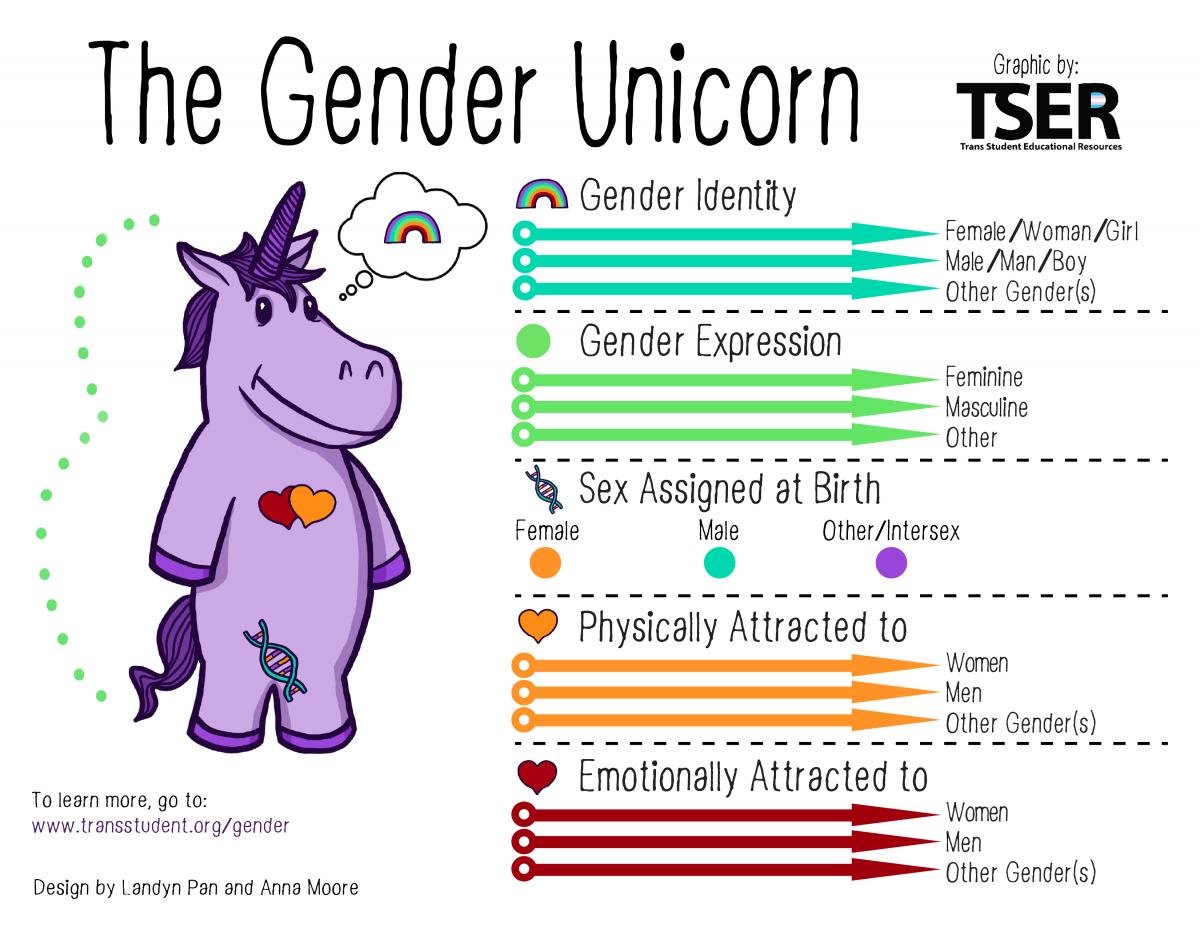 Gender identity, gender presentation (expression), sex assigned at birth, and physical/emotional attraction all contribute to a person's sense of self. Because these elements can be fluid over a spectrum, it can be helpful to use imagery such as the Gender Unicorn to visualize all of the factors that make up a person. Click here to learn more about each of these aspects of identity and to fill out your own interactive Gender Unicorn.
Gender identity, gender presentation (expression), sex assigned at birth, and physical/emotional attraction all contribute to a person's sense of self. Because these elements can be fluid over a spectrum, it can be helpful to use imagery such as the Gender Unicorn to visualize all of the factors that make up a person. Click here to learn more about each of these aspects of identity and to fill out your own interactive Gender Unicorn.
Sources: Trans Student Educational Resources (TSER). Illustration by Anna Moore. Design by Landyn Pan, Eli Erlick, et al.
Sexual violence, domestic violence, and human trafficking affect people of all genders and sexualities. However, people in LGBTQ+ communities face comparatively high rates of violence:
- According to the Centers for Disease Control and Prevention (CDC), gay and bisexual men report higher rates of sexual violence than heterosexual men. Additionally, 29% of heterosexual men, 26% of gay men, and 37% of bisexual men reported stalking, sexual violence, and/or abuse by an intimate partner.1
- Also according to the CDC, lesbians and bisexual women report higher rates of sexual violence than heterosexual women. Additionally, 35% of heterosexual women, 44% of lesbian women, and 61% of bisexual women reported stalking, sexual violence, and/or abuse by an intimate partner.1
- According to the National Center for Transgender Equality, 47% of transgender adults have experienced sexual violence, and 54% have experienced domestic violence.2
- The Williams Institute estimates that 40% of homeless youth are LGBTQ+.3 Relative to their heterosexual counterparts, LGBTQ+ homeless youth are more likely to experience sexual violence and sex trafficking.4
- LGBTQ+ communities also face considerable hate violence, or incidents in which people are targeted because of their sexual and gender identities. In 2016, the National Coalition of Antiviolence Programs5 received reports of hate violence from 1,036 LGBTQ+ people in the United States. Of these incidents, 59 involved sexual violence, 22 involved sexual harassment, and 70 involved stalking. A majority of hate violence survivors were LGBTQ+ people of color, particularly in Latinx and Black/African American Communities.
- Also in 2016, the National Coalition of Antiviolence Programs received reports of 28 anti-LGBTQ+ homicides (not counting the Pulse Nightclub shooting, in which 49 people were killed).5 Across these reports, 79% of victims were LGBTQ+ people of color (18 Black/African American and 4 Latinx), 68% were transgender or gender nonconforming. Transgender women of color were the most at risk, comprising 61% – or 17 out of 28 – of hate violence homicide victims.
Social marginalization can make it difficult for survivors to recognize violent experiences and seek support. Sexual and domestic violence are often represented by stories and statistics about cisgender men’s violence toward cisgender women. While this is important, and reflects a majority of that violence, it can make it more difficult to recognize rape and abuse in same-sex relationships and any incidents involving transgender or gender nonconforming people. LGBTQ+ survivors and their significant others may also fear mistreatment if and when they seek support. For example, the National Center for Transgender Equality2 reports that 1 in 3 transgender adults who pursued healthcare in the past year received transphobic treatment, and 1 in 4 avoided seeing a doctor when they needed to due to fears of mistreatment. If transgender survivors would like a sexual assault forensic exam, or if they need medical attention for injuries related to domestic violence, they must weigh that need for care against concerns about mistreatment from providers.
SERV is dedicated to supporting survivors of all genders and sexualities. All staff and volunteers receive training in providing welcoming and affirming services. We also partner with several LGBTQ+ agencies and community groups in South Jersey and have staff who specialize in outreach, public education, advocacy, and counseling for LGBTQ+ communities.
References
1Walters, M. L., et al. 2013. The National Intimate Partner and Sexual Violence Survey (NISVS): 2010 Findings on Victimization by Sexual Orientation. Atlanta, GA: National Center for Injury Prevention and Control, Centers for Disease Control and Prevention.
2James, S. E., et al. 2016. The Report of the 2015 U.S. Transgender Survey. Washington, DC: National Center for Transgender Equality.
3Durso, L. E. & Gates, G. J. 2012. Serving Our Youth: Findings from a National Survey of Service Providers Working with Lesbian, Gay, Bisexual, and Transgender Youth who are Homeless or At Risk of Becoming Homeless. Los Angeles: The Williams Institute with True Colors and The Palette Fund.
4Keuroghlian, A. S., et al. 2014. “Out on the Street: A Public Health and Policy Agenda for Lesbian, Gay, Bisexual, and Transgender Youth Who Are Homeless.” American Journal of Orthopsychiatry 84(1): 66-72.
5Waters, E., et al. 2016. Lesbian, Gay, Bisexual, Transgender, Queer, and HIV-Affected Hate Violence in 2016. New York: National Coalition of Anti-Violence Programs.
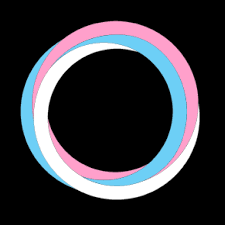 SERV endorses International Pronouns Day, which seeks to make respecting, sharing, and educating about personal pronouns commonplace. Referring to people by the pronouns they determine for themselves is basic to human dignity. Being referred to by the wrong pronouns particularly affects transgender and gender nonconforming people. Together, we can transform society to celebrate people’s multiple, intersecting identities. We encourage colleges, schools, workplaces, and local organizations to hold educational and empowering events on International Pronouns Day, which takes place on the third Wednesday in October each year.
SERV endorses International Pronouns Day, which seeks to make respecting, sharing, and educating about personal pronouns commonplace. Referring to people by the pronouns they determine for themselves is basic to human dignity. Being referred to by the wrong pronouns particularly affects transgender and gender nonconforming people. Together, we can transform society to celebrate people’s multiple, intersecting identities. We encourage colleges, schools, workplaces, and local organizations to hold educational and empowering events on International Pronouns Day, which takes place on the third Wednesday in October each year.
